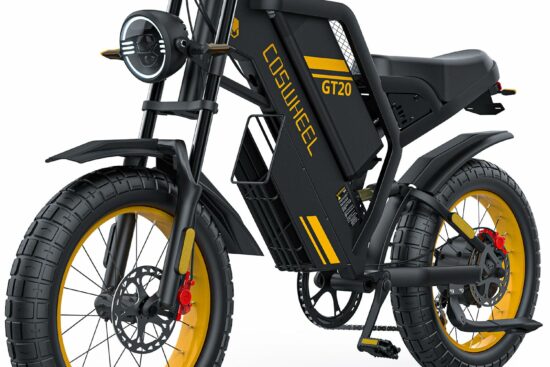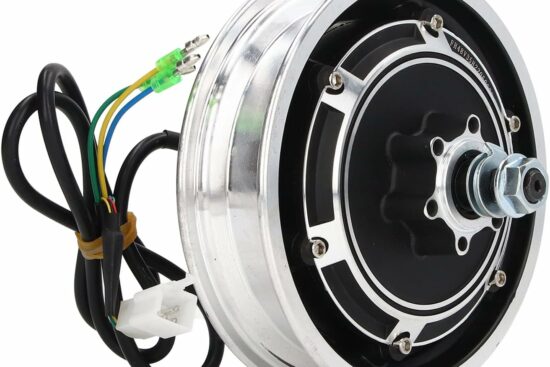
Electric bikes, also known as e-bikes, have gained immense popularity in recent years due to their eco-friendly and efficient nature. However, as this innovative mode of transportation continues to grow in popularity, it is essential to understand the legal regulations that surround electric bikes. This article will provide an insightful overview of the key legal aspects that riders need to be aware of when it comes to e-bikes. From speed limits and age restrictions to helmet requirements and road usage guidelines, this comprehensive guide will ensure that you navigate the legal terrain of electric bikes with ease and confidence.
Classification of Electric Bikes
Bicycles with Pedal Assist
Electric bikes, also known as e-bikes, are classified into different categories based on their features and capabilities. One common classification is based on whether the bike has pedal assist or not. Bicycles with pedal assist have an electric motor that provides assistance to the rider while they are pedaling. This means that the motor only activates when the rider is pedaling and does not provide any assistance if the rider is not pedaling. The level of assistance can usually be adjusted by the rider, allowing them to choose how much assistance they need.
Throttle-Controlled Electric Bikes
Throttle-controlled electric bikes, on the other hand, have a throttle that allows the rider to control the motor without pedaling. This means that the motor can provide assistance even if the rider is not actively pedaling. The throttle is typically located on the handlebars, and the rider can simply twist it to activate the motor. Throttle-controlled electric bikes are often preferred by riders who may have difficulty pedaling for long periods or who simply want the convenience of not having to pedal.
Speed Pedelecs
Speed pedelecs are a special category of electric bikes that are capable of reaching higher speeds. These bikes are equipped with a more powerful motor that can provide assistance at faster speeds, allowing the rider to reach speeds of up to 28 miles per hour. The increased speed capability of speed pedelecs means that they are subject to additional regulations and requirements, which will be discussed further in the following sections.
Licensing and Registration Requirements
Licensing Requirements
In many jurisdictions, electric bikes with certain specifications are exempt from requiring a license. These specifications typically include a maximum motor power output, a maximum assisted speed, and a weight limit. However, it is important to note that these regulations may vary depending on the jurisdiction, so it is always advisable to check with the local authorities to determine the specific licensing requirements in your area.
Registration Requirements
Similarly, the need for registration of electric bikes also depends on the jurisdiction. Some areas may require registration for certain types or classes of electric bikes, while others may not require any registration at all. Registration typically involves providing proof of ownership and may require the payment of a registration fee. Again, it is crucial to consult the local regulations and authorities for specific information on registration requirements in your area.

Minimum Age and Rider Requirements
Minimum Age Requirement
To ensure the safety of riders and other road users, many jurisdictions have established minimum age requirements for operating electric bikes. The minimum age can vary depending on the type and classification of the electric bike. For example, some jurisdictions may require riders to be at least 14 years old to operate an electric bike with pedal assist, while others may set the minimum age at 16 for throttle-controlled electric bikes. It is essential to familiarize yourself with the specific minimum age requirements in your locality before operating an electric bike.
Rider Requirements
Apart from the minimum age requirement, riders of electric bikes may be subject to other regulations as well. These regulations may include wearing specific safety gear, such as helmets, and following traffic laws and regulations applicable to cyclists. Riders may also be required to have a valid driver’s license or an electric bike-specific license in some jurisdictions. Adhering to these rider requirements is crucial to ensure both personal safety and compliance with the law.
Rules of the Road
General Traffic Laws
As electric bikes are considered bicycles in many jurisdictions, riders are generally expected to follow the same traffic laws as cyclists. This includes obeying traffic signals, stopping at stop signs, yielding to pedestrians, and using hand signals to indicate turns. It is essential to familiarize yourself with the specific traffic laws applicable to cyclists in your area and ensure compliance when operating an electric bike.
Speed Limits
Electric bikes are typically subject to the same speed limits as bicycles. However, speed limits may vary depending on the location and type of road. In some areas, there may be specific speed limits for electric bikes, especially for speed pedelecs, which are capable of higher speeds. It is important to observe the speed limits and ride at a safe and appropriate speed for the given road conditions.
Use of Lights and Reflectors
To enhance visibility and ensure safety, many jurisdictions require electric bikes to have lights and reflectors. These lighting and reflector requirements are similar to those for bicycles. Typically, an electric bike should be equipped with a white front light and a red rear light, as well as reflectors on the front, rear, and sides. These lights and reflectors help increase the visibility of the electric bike, especially during low-light conditions, making it easier for other road users to spot and recognize the bike.

Helmet and Safety Equipment Regulations
Helmet Requirements
Wearing a helmet is crucial for cyclist safety, and this also applies to riders of electric bikes. Many jurisdictions have established helmet requirements for electric bike riders, especially for riders under a certain age or operating specific types of electric bikes. In some areas, helmet use may be mandatory for all electric bike riders. It is important to check the local regulations to determine the specific helmet requirements that apply to electric bike riders in your area.
Safety Equipment Regulations
In addition to helmet requirements, some jurisdictions may also have regulations regarding other safety equipment for electric bike riders. This may include requirements for reflective clothing or accessories, mirrors, bells or horns, and other safety devices. These regulations aim to enhance the safety of electric bike riders and ensure their visibility to other road users. Familiarize yourself with the specific safety equipment regulations in your area and ensure compliance for a safe riding experience.
Sidewalk and Bike Lane Usage
Sidewalk Usage
The usage of sidewalks by electric bike riders is subject to local regulations. In some areas, electric bikes may be allowed on sidewalks, especially if they are equipped with pedal assist and are limited to lower speeds. However, it is important to note that many jurisdictions do not permit electric bikes to be ridden on sidewalks to ensure the safety of pedestrians. Always consult the local regulations and follow their guidelines regarding the usage of electric bikes on sidewalks in your area.
Bike Lane Usage
Electric bikes are often allowed in designated bike lanes, as they are considered bicycles in most jurisdictions. This allows riders to safely travel on roads, separated from motor vehicle traffic. However, it is essential to be mindful of other cyclists and follow the rules of the bike lane. This includes traveling at an appropriate speed, yielding to pedestrians, and using hand signals to indicate turns or lane changes. Respect the shared space and ensure a courteous and safe riding experience for all.
Shared Paths and Trails
Shared paths and trails, such as those in parks or recreational areas, may have specific regulations regarding the usage of electric bikes. These regulations aim to maintain the safety and enjoyment of all users, including pedestrians and other cyclists. Some paths or trails may restrict the use of electric bikes altogether, while others may allow electric bikes with certain limitations or conditions. Familiarize yourself with the rules and regulations for shared paths and trails in your area to ensure compliance and a positive experience for everyone.
Insurance Coverage for Electric Bikes
Third-Party Liability Insurance
In some jurisdictions, it may be mandatory to have third-party liability insurance coverage for electric bikes. Third-party liability insurance provides coverage in case the rider causes injury or damage to another person or their property while operating the electric bike. This coverage ensures that the affected party is compensated for their losses. However, the requirement for third-party liability insurance can vary depending on the jurisdiction. It is important to review the local regulations and consult with insurance providers to determine if this type of insurance is required for electric bike riders in your area.
Personal Insurance Coverage
While it is not always mandatory, obtaining personal insurance coverage for your electric bike can be beneficial. Personal insurance coverage can protect your investment in case of theft or damage to your electric bike. It can also provide coverage for personal injuries sustained while riding the electric bike. This type of insurance can give you peace of mind knowing that you are financially protected against potential risks and losses associated with using an electric bike. Consider contacting insurance providers to explore personal insurance coverage options for your electric bike.
DUI and Electric Bikes
Implications of Riding Under the Influence
Operating an electric bike while under the influence of alcohol or drugs is unsafe and against the law in many jurisdictions. Riding under the influence impairs judgment, coordination, and reaction time, which increases the risk of accidents and injuries. It is important to recognize that operating an electric bike while impaired can have serious consequences, both in terms of personal safety and legal ramifications. Always prioritize safety and never ride an electric bike if you have consumed alcohol or drugs that impair your ability to operate it safely.
Blood Alcohol Concentration Limit
The blood alcohol concentration (BAC) limit for electric bike riders can vary depending on the jurisdiction. Many areas apply the same BAC limit for electric bike riders as they do for motor vehicle drivers. This means that exceeding the legal limit can result in severe penalties, such as fines, license suspension, or even criminal charges. It is crucial to familiarize yourself with the specific BAC limit for electric bike riders in your area and understand the consequences of exceeding it. Always err on the side of caution and never operate an electric bike if you have consumed alcohol or drugs that may impair your ability to ride safely.
Special Considerations for Commercial Use
Commercial Licensing and Permits
Electric bikes used for commercial purposes, such as delivery services or bike rentals, may require additional licensing or permits. These regulations aim to ensure the safety and proper operation of electric bikes in commercial settings. Depending on the jurisdiction, commercial electric bike operators may need to obtain a specific license or permit, adhere to specific safety standards, or fulfill certain insurance requirements. If you are considering using an electric bike for commercial purposes, it is important to research and comply with the specific regulations and licensing requirements for commercial use in your area.
Safety Regulations for Delivery Riders
Delivery riders who use electric bikes are often subject to specific safety regulations to protect both themselves and other road users. These regulations may include requirements for reflective clothing or accessories, additional lighting or signaling devices on the electric bike, or specific safety training for riders. Adhering to these safety regulations is crucial to minimize the risk of accidents and ensure the efficient and safe operation of electric bikes for delivery purposes. Delivery riders should familiarize themselves with the safety regulations specific to their role and follow them diligently to maintain a high level of safety and professionalism.
Modifications and Customizations
Legal Limitations on Modifications
While it may be tempting to customize or modify your electric bike, it is important to be aware of any legal limitations. Many jurisdictions have specific regulations regarding modifications to electric bikes to ensure the safety and legality of the modifications. Some modifications, such as increasing the motor power output beyond the legal limit or modifying the bike to reach speeds higher than what is allowed, may be prohibited. It is crucial to familiarize yourself with the specific regulations regarding modifications in your area and ensure compliance with any legal limitations.
Approved Customizations
However, there are also approved customizations that can enhance the performance or comfort of your electric bike. These customizations may include adding accessories such as a cargo rack, child seat, or bike lights. It is important to ensure that any customization you make to your electric bike does not compromise its safety or legality. Always consult the manufacturer’s guidelines and seek professional advice if needed before making any modifications to your electric bike. Compliance with applicable regulations and guidelines will ensure that your customizations are safe and in accordance with the law.
In conclusion, understanding the legal regulations surrounding electric bikes is crucial for both riders and authorities. By adhering to these regulations, riders can ensure their own safety, the safety of others, and maintain compliance with the law. It is essential to familiarize oneself with the specific regulations in their jurisdiction, as they may vary. Always prioritize safety, follow the rules of the road, and stay informed about any updates or changes to the regulations. Remember, responsible and law-abiding riders contribute to a positive and safe environment for everyone using electric bikes.




















